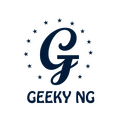10.7K
xiv PREFACE from the Latin word for book and the Latin word for free, so that as a consequence the liberal arts are book arts which make the human spirit free from the body and its association with particular things. After having joined the Dominican Order at Naples, St. Thomas subsequently set out for the Convent at Cologne where he came into contact with Albertus Magnus, his doctrinal master. It is fairly well authenticated that to Albertus Magnus, St. Thomas owes his vocation to philosophy and his Aristotelian initiation. This is not the place to discuss what St. Thomas derived from his master in detail. But it is often pointed out that Albertus Magnus assembled the material and began the foundation of what St. Thomas later erected into a cathedral of doctrine. It is true that St. Thomas soon began to substitute the method of running paraphrase for the metaphrases of Albertus Magnus in commenting on the Aristotelian works. His thought is free from glosses and digressions, exact and rigorous, finely balanced and directed towards its central object with a clear vision and great foresight. The two Summae exhibit a re- duction to a few simple modes of all the complex modes of argument employed by his predecessors. His mind was pri- marily architectonic and constructive, attributes which do much to account for the almost miraculous organization of doctrine which he accomplished. St. Thomas accompanied Albert to Paris in 1245, and thence back to Cologne in 1248. In 1252 the general of his order called him back to teach at Paris. This is the period of his public lectures, first as a bachelor and later as a master. The date of his mastership corresponds with that of St. Bonaventura in 1257. After a removal from Paris and a residence in Rome where he delivered at the papal court the truths which he had meditated, he again returned to Paris in 1268. While in Rome he came into contact with William of Moerbeke who is known
Was this article helpful?
Yes0No0
